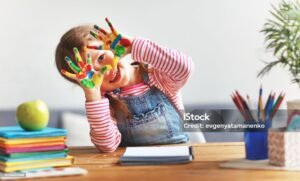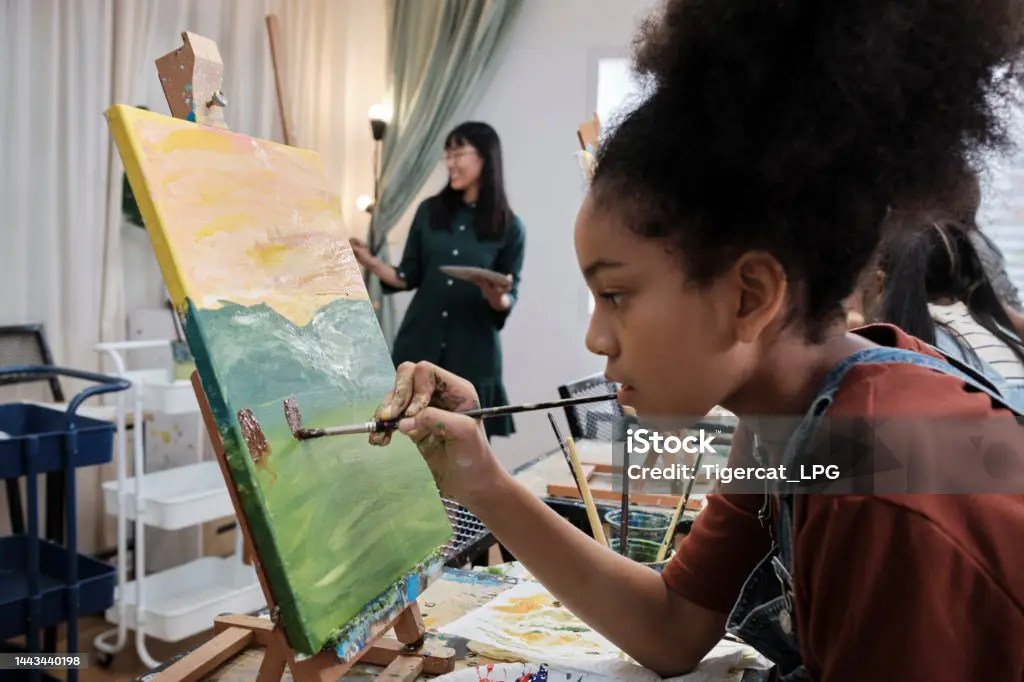Art education is becoming a dynamic force that gives students the tools they need to navigate the complexities of today’s rapidly changing world.
Long seen as merely a creative hobby or outlet, art education is frequently undervalued in its ability to equip people with the values and skills needed for a meaningful and fulfilling life.
Art education is emerging as a dynamic force that supports students’ holistic well-being and gives them the tools to navigate life’s complexities with integrity in today’s fast changing world.
Art Education as a Catalyst for Creativity and Well-being
The Transformative Impact of Art on Personal Development
How Art Education Nurtures Creativity and Emotional Wellness
Art Education and Creativity:
Stimulating Creativity through Artistic Expression
Encouraging exploration and experimentation
Cultivating divergent thinking and problem-solving skills
Enhancing imaginative capacities through various art forms
Using Art as a Tool for Expression and Self-Discovery
Providing a platform for self-reflection and introspection
Allowing individuals to communicate emotions and experiences non-verbally
Promoting a sense of identity and individuality through creative expression
Fostering Innovation and Adaptability through Art Education
Teaching adaptability in handling challenges and failures
Encouraging innovative thinking and unconventional problem-solving approaches
Preparing individuals for an ever-evolving world by nurturing flexibility and open-mindedness

Art Education and Emotional Well-being:
Art as a Therapeutic Outlet for Emotional Wellness
Alleviating stress and anxiety through art creation
establishing a secure environment for healing and emotional release
Offering a sense of accomplishment and self-worth through artistic achievements
Building Confidence and Resilience through Art
Empowering individuals to embrace mistakes and learn from them
Bolstering self-esteem by celebrating artistic achievements
Cultivating resilience by navigating challenges in the creative process
Creating a Sense of Community and Connection
Fostering empathy and understanding through shared artistic experiences
Encouraging collaboration and communication among individuals from diverse backgrounds
Establishing a supportive network within the artistic community for mutual growth and encouragement
The Role of Art Educators in Nurturing Creativity and Well-being:
Encouraging an atmosphere of acceptance and appreciation for diverse perspectives
Providing constructive feedback to nurture artistic growth and confidence
Creating a safe space for students to explore and express themselves freely
Inspiring and Motivating Creative Exploration
Introducing diverse art forms and techniques to broaden students’ horizons
Encouraging curiosity and experimentation without fear of judgment
Acting as mentors and role models to inspire passion and dedication to the arts
Integrating Art with Holistic Education
Collaborating with other disciplines to enhance interdisciplinary learning
Highlighting the interconnectedness of art with various subjects for a holistic educational experience
Emphasizing the value of creativity in problem-solving across academic and real-world contexts
Conclusion:
The Indispensable Role of Art Education in Enhancing Creativity and Well-being
Art as a Catalyst for Personal Growth, Emotional Wellness, and Societal Connection
Continual Advocacy for the Integration and Promotion of Art Education in Educational Systems and Communities
Supporting the Expression of Creativity
When it comes to art education, the creative possibilities are endless. Students can express their creativity, individuality, and viewpoints through painting, sculpture, or digital media. In a society that prizes innovation, this creative process helps students become more adept at solving problems and developing critical thinking and adaptability.
2. Defining Evaluations
Conventional evaluation techniques have the potential to inhibit innovation and deter taking risks. Teachers are challenged by art education to create projects that promote innovative thinking and paradigm shifts. Through these projects, students are immersed in profoundly meaningful experiences that go beyond simple memorization and foster critical thinking and self-discovery.
Tailored Educational Experiences
The learning process in art education is customized to meet each student’s needs. Art education provides personalised resources and activities, adjusts complexity, and provides real-time feedback by acknowledging each student’s unique talents and preferences.
Students’ varied learning requirements are satisfied thanks to this personalization, which also increases effectiveness and engagement.
Overcoming Obstacles: Resolving Issues in Art Education
Although there are many advantages to art education, there are also issues and problems that need to be addressed.
1. Equity and Access
Not every student has the same access to art instruction. There are differences, and work must be done to guarantee that every student can gain from the empowering influence of art education.
2. Integration of Curriculum
It can be difficult to incorporate art education into a larger curriculum. Developing a balance between the arts is crucial.
3. Evaluation of Originality
The conventional measures for assessing academic performance are put to the test by art education. It’s critical to figure out how to evaluate and measure self-expression and creativity.
Art Education’s Future
It is anticipated that art education will become even more vital in empowering learners, encouraging creativity, and improving general wellbeing. It is impossible to overstate the value of art education in fostering critical thinking, creativity, and emotional intelligence as the world and technology change.
To sum up, art education has the power to completely transform how pupils study and develop. Through fostering creativity, critical thinking, and self-expression, art education equips people to find fulfillment and ethically navigate the complexities of life.
As the field of art education develops further, it is imperative that issues and efforts be addressed.


Thanx bro